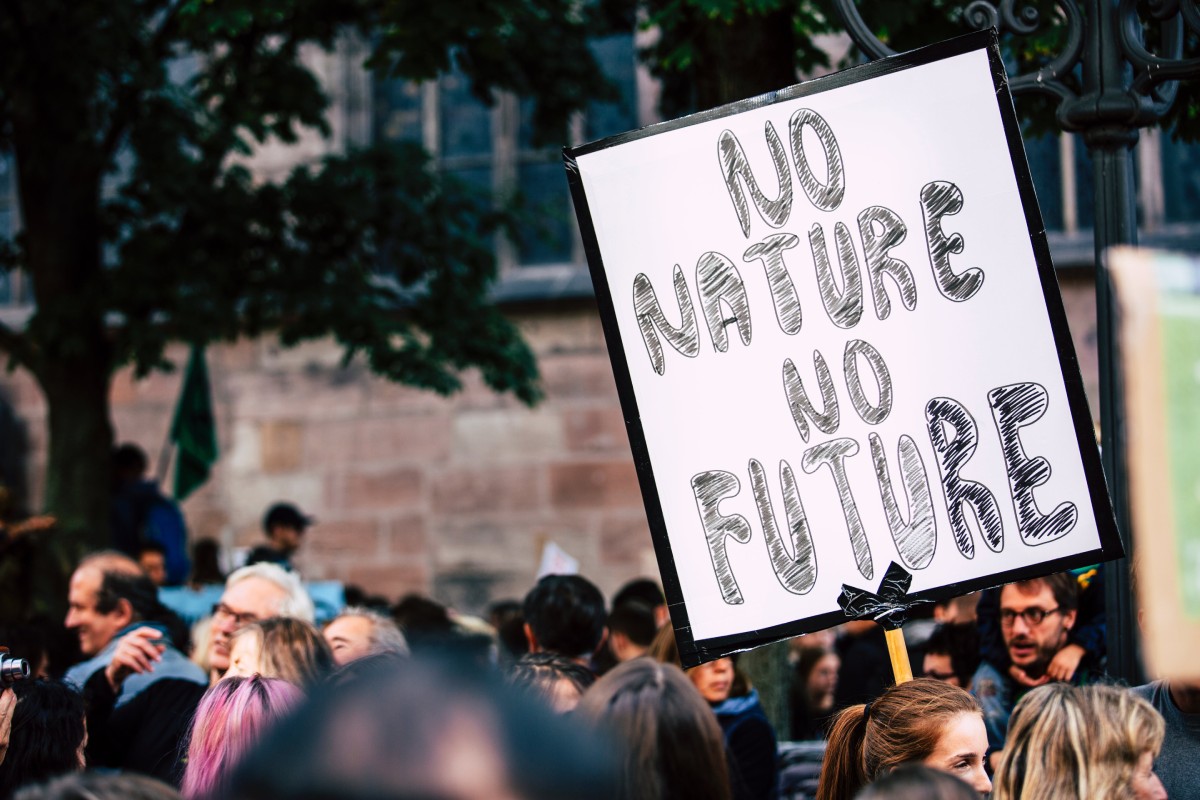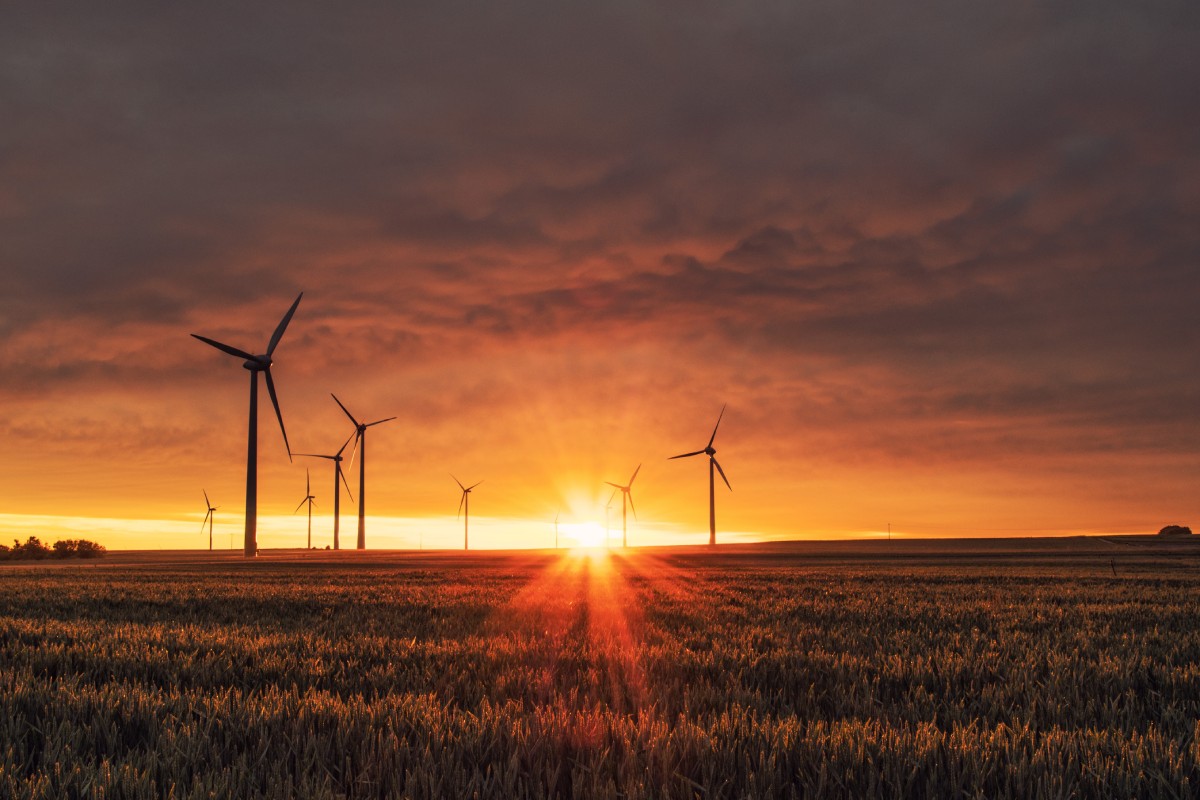Introduction
In the embrace of our beautiful, yet fragile planet, individuals around the world find themselves entwining with a web of emotional and psychological responses to the stark realities of environmental change. The verdant forests, expansive oceans, and soaring skies, which have long stood as eternal, are revealing their vulnerabilities in the face of human impact. “Eco-Anxiety: Coping in a Changing World” delves into the emotional tapestry that intertwines our mental well-being with the ecological shifts around us, exploring not only the tumultuous emotions that surge within but also the avenues through which we can navigate this complex and ever-changing landscape.
Definition of Eco-Anxiety
Eco-anxiety encapsulates the chronic fear of environmental doom, a psychological and emotional response to the observable impacts and anticipated future of climate change. It is not merely a fleeting worry but an ongoing distress about the future of the Earth, the habitat, species, and the human communities persisting within it. This anxiety burgeons from an empathetic concern for the planet, intertwining with our daily lives, decisions, and future perspectives, consequently trickling down into our psychological well-being.
A Silent Echo of Environmental Changes
Eco-anxiety silently echoes the vibrations of environmental shifts within us, crafting a subtle, yet profound, psychological landscape that resonates with the physical transformations occurring within our environment.
Brief Explanation of Why It’s Relevant Today
Our world is unfurling a myriad of environmental changes, from melting ice caps and ravaging wildfires to depleting biodiversity and shifting weather patterns, each narrating a tale of a planet in flux. Consequently, individuals across the globe find their mental and emotional realms entwining with these palpable shifts in their surroundings. Eco-anxiety has thus transcended from being a mere concept to a tangible experience, pervading the lives of many who observe, worry, and deeply care for the only home we’ve ever known, making it an imperative topic of discussion and understanding in our contemporary realm.
Witnessing a World in Flux
As witnesses and participants in a world that shifts, moulds, and sometimes, withers before our eyes, the pertinence of understanding, acknowledging, and addressing eco-anxiety becomes not only relevant but crucial in our collective journey forward.
Overview of the Topics to be Covered
Navigating through the waves of eco-anxiety, this discourse will weave through various aspects such as understanding our emotional responses, exploring coping mechanisms, and acknowledging collective efforts in combating climate change. We will explore pathways through which individuals and communities can navigate their emotional and psychological landscapes amidst the ongoing environmental shifts. Together, we shall traverse through discussions on maintaining mental well-being, engaging in impactful actions, and fostering a collective resilience as we move forward in this ever-changing world.
A Journey Through Emotional and Ecological Landscapes
Embarking on this journey, we shall traverse the landscapes of our internal and external worlds, exploring not only how they intertwine and interact but also the avenues through which we can navigate them with understanding, empathy, and action.
Through the lens of empathy, understanding, and actionable knowledge, let us embark on this journey together, exploring not only the emotional and psychological impacts of environmental changes but also the myriad ways through which we can navigate, adapt, and perhaps, find a semblance of peace and purpose amidst the changing tides.
Understanding Eco-Anxiety
Dipping our toes into the vast ocean of emotions and psychological responses towards our changing planet, it becomes pivotal to dissect eco-anxiety, a term that has slowly etched its way into our global vocabulary. Embracing our planet means also embracing the myriad of emotions that emanate from witnessing its changes, its struggles, and the uncertain future that looms ahead. As we delve into understanding eco-anxiety, we aim to weave through its various facets, exploring its manifestations, the science that underscores it, and the global voices that resonate with it.

Description of Eco-Anxiety and its Symptoms
Eco-anxiety, fundamentally, encapsulates the persistent worries, stress, and fears experienced by individuals in response to the environmental crises encircling us. It doesn’t merely rest on a linear spectrum of fear but sprawls into various emotional and behavioral responses, encompassing feelings of loss, despair, anger, guilt, and helplessness. Symptoms might weave through physical manifestations like sleep disturbances, changes in appetite, and fatigue, to emotional and cognitive ones such as mood swings, persistent sadness, and difficulty concentrating.
Navigating Through Emotional Echoes
Navigating through the emotional echoes of eco-anxiety implies acknowledging these feelings and symptoms, understanding them not as isolated experiences but as part of a collective emotional response to shared environmental realities.
The Science Behind Eco-Anxiety
Eco-anxiety doesn’t nestle into our psychological realms without context. It is deeply rooted in the scientific narratives that weave through the environmental realities encircling us. The science behind eco-anxiety pertains not only to understanding the ecological crises themselves but also how these crises reverberate through our psychological and emotional worlds. The emerging field of eco-psychology explores the relationship between human psychological processes and our natural environment, examining how environmental degradation can ripple into our mental and emotional well-being and how our collective and individual psychologies can influence environmental action and attitudes.
A Tale of Interwoven Realities
Our environmental and psychological realms are not isolated – they weave a tale of interwoven realities, where the ebbs and flows of one cascade through the other, crafting a narrative that is shared, yet uniquely experienced.
The Global Scale of This Phenomenon
Eco-anxiety isn’t confined to specific geographic or demographic boundaries. It permeates through various societies and cultures, bridging individuals through a shared emotional response to a global crisis. From the teenager in Europe deeply moved and motivated by global climate strikes to the farmer in India, anxiously observing shifting weather patterns, eco-anxiety traverses across ages, professions, and cultures. It is not an isolated echo in a secluded valley but a collective voice, resonating through the global landscapes, intertwining individuals through shared concerns, fears, and motivations toward our planet.
Resonating Voices Across Boundaries
As voices of eco-anxiety resonate across boundaries, they create a shared, yet diverse, tapestry of emotional and psychological experiences, each thread narrating a unique tale of interaction, response, and coping amidst our shared environmental realities.
With this understanding of eco-anxiety, we hope to not only shine a light on the psychological and emotional impacts of the environmental crisis but also foster a collective understanding and empathy towards those experiencing it, recognizing it not as an isolated individual experience but as a shared emotional response that bridges us through a collective concern and care for our planet.
Causes of Eco-Anxiety
Eco-anxiety permeates our contemporary global society, threading a common concern and psychological strain amongst populations, as we jointly witness the deterioration of our planet. The rise in temperature, swelling sea levels, and the devastating loss of biodiversity are not only stark reminders of a planet in peril but also significant triggers for mental health disturbances. Within this section, we delve into the various catalysts that contribute to the burgeoning issue of eco-anxiety, assessing its roots and ubiquity within varied social contexts.

Climate Change and Environmental Destruction
Imposing images of wildfires engulfing landscapes, icebergs melting into an abyss, and smog enveloping cities — the stark realities of climate change and environmental destruction serve as poignant reminders of a planet in distress. Often, the sheer magnitude of the environmental issues faced globally instills a palpable anxiety, emanating from a sense of helplessness and foreboding concerning the irreversible impact these changes may entail. For many, it’s a grievous mourning of the environments lost and a perpetual worry about the sustainability of our existing natural world.
Overwhelm from Media Reports
The continuous stream of distressing news — be it the relentless torrential rains flooding communities, wildfires decimating towns, or species being nudged towards extinction — contributes significantly to eco-anxiety. The media, as a lens through which we perceive the wider world, invariably plays a pivotal role in disseminating such grim realities. While it is paramount to stay informed, the influx of doom-laden headlines and potent images of destruction can subsume individuals, steering them towards a state of chronic anxiety and concern for the planetary trajectory.
Sensationalism and Despair
It’s vital to understand the potential impact of sensationalism within media reports. The amplification of despair, often absent of solutions or steps forward, can entrench feelings of helplessness among audiences, leading them down a path that constantly fuels anxiety without providing avenues for action or hope.
Fear for Future Generations
The trepidation towards the future, especially in the context of forthcoming generations, serves as a profound source of eco-anxiety. Parents, educators, and youth alike grapple with the projections of a future characterized by resource scarcity, disrupted ecosystems, and amplified climate crises. This fear extends beyond mere environmental degradation, infiltrating concerns about societal stability, food security, and the overall quality of life for descendants who will inherit a world shaped by our current and past actions.
Bridging Fear and Proactive Change
It’s pivotal to transform the fear for future generations into a motivating force, propelling actions and changes that carve out a more sustainable path forward. Harnessing this concern productively not only assuages feelings of anxiety but also seeds hope through tangible changes and the fostering of a proactive mindset amongst youth.
Exploring the causes of eco-anxiety implores us to gaze unflinchingly at the realities and futures we may be on track to inherit. Yet, within this acknowledgment lies the seed for change, understanding, and a collective momentum towards reshaping our trajectory in harmony with the environment. Future sections will explore strategies to manage eco-anxiety, underscoring the importance of transitioning from a space of fear into a domain of informed, compassionate action.
Impact of Eco-Anxiety
In a world that increasingly recognizes the entwining of environmental health with our own, eco-anxiety surfaces as a resonant expression of the collective unease and distress felt by many. The impacts of eco-anxiety stretch beyond the emotional and psychological, infiltrating various facets of our lives, including our social interactions and physical wellbeing. Herein, we will explore the multitudinous ways in which eco-anxiety manifests and reverberates through our lives, propounding a deeper understanding of this prevalent psychological state.

Psychological Impacts: Stress, Anxiety, Depression
Eco-anxiety carves a unique niche within our psychological experiences, entwining existential dread with a palpable fear of environmental catastrophes. Stress and anxiety germinate from the seed of environmental concerns, spiraling into persistent worry, and at times, leading to depressive states. For many individuals, the constant influx of alarming environmental news and data points act as perpetual stressors, chipping away at mental resilience and potentially cultivating a pervasive state of dread and melancholia.
Manifestation in Daily Life
The psychological impact often seeps into daily living, where decisions, behaviors, and perceptions may be covertly influenced by the underlying anxiety pertaining to environmental conditions and the future. It can materialize as a constant, albeit subtle, layer of worry or stress, perpetually coloring experiences and choices.
Social Impacts: Interpersonal Relationships, Community Dynamics
Eco-anxiety not only casts shadows on our personal mental landscapes but also extends its tendrils into our social spheres. Interpersonal relationships may bear the brunt of this anxiety, as conversations around climate change and sustainability weave through social interactions, potentially igniting conflicts, despair, or collective grief. Within community dynamics, eco-anxiety might either foster unity through shared concerns or sow discord as individuals navigate the complexities and divergences in their environmental beliefs and actions.
Community Coping Mechanisms
Spotlighting communities that cultivate shared spaces for dialogues and support around eco-anxiety becomes vital. Developing community-based coping mechanisms and forums where collective grieving and planning can take place may serve as a pivotal tool in navigating through the social ramifications of eco-anxiety.
Physical Impacts: Stress-Related Ailments
The physical body, intricately linked with our emotional and psychological states, is not immune to the strains of eco-anxiety. Stress-related ailments, including sleep disturbances, headaches, and a potential compromised immune system, may emerge as tangible repercussions of the persistent worry and stress borne from environmental concerns. The physical manifestations of eco-anxiety underscore the holistic impact of mental health on overall wellbeing, revealing the imperative to address it not merely as an emotional phenomenon but one that reverberates through our entire being.
Harnessing Physical Activities for Coping
Physical activities, including nature walks, yoga, or any form of exercise, can morph into potent coping strategies, offering a dual benefit of alleviating physical stress symptoms while also catering to emotional wellbeing.
Navigating through the intricate impacts of eco-anxiety elucidates a reality where mental, social, and physical domains are irrevocably intertwined. As we continue, subsequent sections will venture into strategies and pathways through which we might not only understand but also holistically manage and navigate through the landscapes of eco-anxiety, fostering resilience, and adaptive coping in our changing world.
Managing Eco-Anxiety: Acknowledging the Emotions
Eco-anxiety, with its multifaceted impacts on mental, social, and physical domains, mandates a nuanced approach to management that begins with a fundamental step: acknowledgment. Recognizing, validating, and understanding the emotional experiences born from eco-anxiety form the bedrock upon which coping and adaptation are built. Let us embark on a journey to comprehend how acknowledgment transcends mere understanding, shaping a crucial pathway toward healthy processing, sharing, and communal coping in the realm of eco-anxiety.

The Importance of Acknowledging Feelings of Eco-Anxiety
Acknowledging feelings of eco-anxiety unfurls the initial thread in the tapestry of managing this pervasive emotion. This involves tuning into our emotional responses toward environmental changes and predicaments, thus bestowing legitimacy upon these feelings instead of submerging them beneath a surface of denial or minimization. This acceptance acts as a foundation, from which constructive emotional processing, sharing, and coping strategies can subsequently emerge.
Creating a Safe Space within Ourselves
Allowing ourselves the grace to experience and accept our emotions without judgment or hurried solutions forms a safe internal space. Herein, emotions are not opponents to be battled but signals to be understood, communicating our values, fears, and aspirations in the environmental realm.
Strategies to Express and Share These Feelings
Once the emotions are acknowledged, expression becomes a pivotal step, providing a vent for the internal pressures built up by eco-anxiety. Expressing feelings might take various forms, such as journaling, artistic endeavors, or verbal communication, each serving as a conduit through which emotions can flow outward, reducing internal emotional congestion and fostering clarity.
Engaging in Expressive Arts
Expressive arts, such as painting, writing, or dancing, offer liberating and insightful mediums through which emotions can find a voice without the necessity for structured or verbal articulation. These creative pathways not only facilitate emotional expression but also provide a means of exploring and understanding the intricate emotional experiences related to eco-anxiety.
The Role of Community Support
Community serves as an anchoring point in the stormy seas of eco-anxiety, providing a collective space where shared experiences, understanding, and support burgeon. Communities might be forged through various platforms, such as local support groups, online forums, or organized events, each providing a safe haven where feelings can be shared, validated, and collectively navigated.
Forming Eco-Anxiety Support Groups
Creating or joining eco-anxiety support groups paves the way for collective coping and strategizing. These groups act as spaces where emotions and experiences are not only shared but also understood and validated in a profoundly empathic manner, as members navigate through similar emotional landscapes.
In anchoring ourselves within a community and fostering expressive avenues for our emotions, we embark on a holistic journey toward managing eco-anxiety in a manner that honors our emotional experiences. It’s a pathway where our feelings are not shunned but embraced, shared, and navigated through collective wisdom and support, ultimately fostering resilience and adaptive coping amidst the environmental challenges we confront.
Managing Eco-Anxiety: Focusing on What You Can Control
Navigating through the stormy seas of eco-anxiety demands a delicate balance between acknowledgment of our emotions and proactive engagement in adaptive strategies. This segment invites you on a journey to explore how channeling our focus toward aspects within our control, particularly in environmental stewardship, provides not merely a practical but also a psychological boon in managing eco-anxiety, intertwining tangible action with emotional empowerment.

Explanation of Control What You Can Approach
Embracing a “control what you can” approach unfurls a path where our actions and choices, though perhaps small in the grand tapestry of global issues, become potent seeds sown in the gardens of change and psychological well-being. It pivots our attention from the overwhelming macro-scale problems, which may lie beyond our immediate influence, toward the tangible, actionable steps we can undertake within our personal and communal spheres.
Cultivating a Mindset of Impact
Cultivating a mindset that recognizes and celebrates our local and personal impacts, however small, enables a perspective shift from helplessness to empowerment, nurturing a space where our actions echo with potency and purpose within the walls of what we can influence.
Steps to Take for Personal and Household Sustainability
Embarking on personal and household sustainability involves intertwining our daily choices, actions, and lifestyle with a thread of environmental consciousness and stewardship. This might manifest through various pathways, such as adopting a more sustainable diet, engaging in mindful consumption, or reducing energy usage, each step echoing as a tangible whisper of change and control amidst the clamor of eco-anxiety.
Engaging in Mindful Consumption
Mindful consumption invites us to navigate through our buying choices with an awareness and consideration of the environmental footprint, exploring alternatives that echo with sustainability and reflecting our commitment to environmental stewardship within our sphere of influence.
The Psychological Benefits of Taking Action
Taking action within our realms of control does not merely echo in the physical realm of environmental impact but also cascades into our psychological landscapes. Engaging in tangible actions alleviates feelings of helplessness, infusing our daily lives with a sense of purpose and direction that acts as a buffer against the destabilizing waves of eco-anxiety. It instills a sense of agency and efficacy, where our choices and actions are recognized as meaningful contributions toward change, no matter their scale.
Empowerment through Action
Empowerment burgeons from the soil of taking action, fostering a sense of capability and influence within us. Engaging in sustainable practices, even in small, localized manners, channels our eco-anxiety into proactive endeavors, weaving a tapestry where our emotions and actions entwine, navigating toward a future where we are active participants in shaping the environmental narrative.
Through focusing on what we can control and engaging in tangible, sustainable actions within our personal and communal spheres, we carve out a space where our eco-anxiety is recognized, channeled, and transformed into purposeful action. It’s here that our emotional and practical worlds merge, fostering a pathway where our eco-anxiety, while acknowledged and validated, also becomes a catalyst propelling us toward conscious, impactful stewardship in our daily lives.
Managing Eco-Anxiety: Education and Advocacy
In our collective journey through understanding and mitigating eco-anxiety, education and advocacy stand out as pivotal facets that not only deepen our understanding of the crises at hand but also provide a vehicle through which our anxiety can be channeled into constructive, empowering action. This section embarks on exploring how nurturing an informed perspective and stepping into a role of advocacy can weave a narrative where our emotional and action-oriented responses to ecological crises converse and intertwine, fostering a pathway of informed, empowered response amidst the landscape of eco-anxiety.

The Importance of Being Informed About Environmental Issues
In a world brimming with environmental challenges, having a rich, nuanced understanding of the issues becomes the bedrock upon which meaningful, informed action can be constructed. Educating ourselves about the myriad facets of environmental issues does not merely equip us with knowledge but also fosters a space wherein our actions and choices are deeply rooted in an understanding of their broader impacts and implications.
Navigating Through Information
As we navigate through the multifaceted world of environmental information, it is crucial to approach information critically, discerning the diverse aspects and perspectives of the issues at hand, and thus, crafting a well-rounded, informed viewpoint that can further guide our actions and advocacy in meaningful directions.
Ways to Become an Advocate for the Environment
Transitioning from knowledge to advocacy involves leveraging our understanding and concern into tangible actions that seek to influence change at various levels, be it within our immediate communities or on a broader scale. Becoming an advocate for the environment translates our eco-anxiety into proactive engagement, where our emotions become a catalyst propelling us toward efforts aimed at tangible, positive change.
Crafting a Personal Advocacy Journey
Our advocacy journey may be deeply personal and varied, perhaps involving engaging in local environmental initiatives, employing our voices within social and political arenas, or simply influencing change within our immediate social circles. Regardless of the scale, each act of advocacy becomes a powerful thread in the wider weave of environmental change and stewardship.
How Advocacy Can Help Alleviate Feelings of Helplessness
Advocacy doesn’t just resonate in the external world; it also echoes profoundly within our internal emotional landscapes. Engaging in advocacy transforms feelings of helplessness and despair, common companions of eco-anxiety, into a sense of empowerment and agency. It forges a narrative where our actions, voices, and choices become potent influencers of change, allowing us to navigate through eco-anxiety with a compass of proactive, empowered engagement.
Finding Empowerment in Collective Action
Moreover, advocacy often intertwines with collective action, providing a communal space where our individual efforts join a larger chorus of voices and actions, further amplifying the impact and, concurrently, fostering a sense of community and shared purpose amidst the often solitary journey of eco-anxiety.
Through embedding our actions within a framework of informed understanding and advocacy, we not only contribute toward the tangible realm of environmental change but also navigate through our eco-anxiety in a manner that is constructive, empowering, and deeply intertwined with our values and concerns. Thus, our journey through managing eco-anxiety morphs into a path where our emotions and actions converse, guiding us toward a future wherein our emotional responses and tangible actions toward environmental crises walk hand in hand, navigating forward with informed, empowered steps.
Managing Eco-Anxiety: Seeking Professional Help
As we delve into eco-anxiety’s intricate landscape, it becomes pivotal to recognize when our emotional and mental well-being necessitates an extra layer of support and expertise. Navigating through the tides of eco-anxiety not only involves internal reflection and community action but also occasionally entails seeking the guidance of professionals who can adeptly help us maneuver through our emotional responses to environmental crises. In this section, let’s explore the junctures at which professional help becomes paramount, the avenues of therapeutic approaches available, and the support that community spaces can offer in our journey through eco-anxiety.

When to Consider Seeking Help from a Mental Health Professional
Eco-anxiety, with its multifaceted expressions, can sometimes escalate to a degree where it starts permeating our daily functioning and emotional stability. Recognizing when to seek professional help becomes crucial in ensuring that our navigation through eco-anxiety is healthy, constructive, and sustainable. Indicators might include persistent feelings of despair, ongoing anxiety that disrupts our daily activities, or a pervasive sense of helplessness that we find challenging to manage on our own.
Recognizing Personal Thresholds
Being attuned to our emotional and mental thresholds and acknowledging when they are breached, facilitates a healthy, proactive approach toward seeking professional help, thereby ensuring that our journey through eco-anxiety is supported and nurtured in a way that is conducive to our overall well-being.
Types of Therapy That Can Be Effective for Managing Eco-Anxiety
The therapeutic arena offers a myriad of approaches that can be particularly effective in managing eco-anxiety, each offering a unique pathway through which our emotional responses to environmental crises can be explored, understood, and managed. Cognitive-behavioral therapy (CBT), for instance, helps us explore and reframe our thought patterns related to eco-anxiety, while ecotherapy integrates the healing power of nature into the therapeutic process.
Exploring Diverse Therapeutic Approaches
Each therapeutic approach, with its distinct methodology, offers a unique pathway through which we can explore and manage our eco-anxiety, providing us with tools and strategies that resonate with our personal experiences and needs.
The Role of Community Support Groups
Community support groups bring forth a shared space wherein experiences of eco-anxiety can be expressed, shared, and understood within a collective framework. These spaces not only provide a sense of solidarity and shared understanding but also become a reservoir of collective wisdom, support, and empathy, further bolstering our individual and collective capacities to navigate through the multifaceted journey of eco-anxiety.
The Power of Shared Experience
Being embedded within a community that shares similar emotional responses to environmental crises can be profoundly healing and empowering, providing a space wherein our experiences are validated, shared, and collectively navigated, thus ensuring that our journey through eco-anxiety is not a solitary endeavor but one that is communally shared and supported.
In tandem, professional help, therapeutic approaches, and community support weave together a holistic, multifaceted tapestry through which we can navigate our eco-anxiety, ensuring that our journey is not only personally sustainable but also collectively shared, validated, and supported. As we weave through our individual and collective journeys, these layers of support and expertise provide a stable, nurturing ground upon which our experiences of eco-anxiety can be healthily, constructively navigated, and managed.
Shaping a More Sustainable Future
In the vibrant tapestry of our collective endeavors to forge a sustainable future, every individual stands as a unique, irreplaceable thread. The cognizance of the impact and importance of our individual and collective actions stirs an empowered and proactive approach towards environmental sustainability. Amidst the undulating waves of eco-anxiety, carving a pathway toward a sustainable future involves a symbiotic dance between individual actions, collective endeavors, and persistent engagement and activism. This section aims to illuminate the pivotal role each one of us plays in sculpting a more sustainable, environmentally attuned future and how our collective actions weave into the larger framework of societal and global change.

Role of Individual Actions in Mitigating Environmental Issues
Navigating through the currents of environmental crises necessitates acknowledging and leveraging the potency of our individual actions. Small, consistent steps towards sustainability, whether it’s adopting a zero-waste lifestyle, minimizing energy consumption, or supporting eco-friendly initiatives, seep into the collective consciousness and lay the foundation for broader societal shifts towards environmental sustainability.
The Ripple Effect of Personal Choices
The choices we make, from our dietary preferences to our consumption patterns, send ripples through the ecological system, underscoring that every step towards sustainability contributes to the larger ecological equilibrium.
Impact of Collective Action on Policy and Societal Norms
While individual actions sculpt the minutiae of sustainability, collective action molds the larger societal and global structures, influencing policy, shaping societal norms, and steering the collective consciousness towards sustainability. Collective endeavors, whether through activism, advocacy, or community initiatives, echo a powerful message, urging policy changes and reflecting a unified, steadfast commitment towards environmental sustainability.
Harnessing the Power of Unity
When we come together, our voices merge into a resonant call for change, affirming that our unified endeavors can mold policies, reshape societal norms, and catalyze significant, impactful change on a global scale.
Encouragement for Continued Engagement and Activism
Engagement and activism serve as the pulsating heart of environmental change. Staying engaged, advocating for policy shifts, participating in activism, and continuously educating ourselves and others keeps the momentum alive, ensuring that our journey towards a sustainable future remains vibrant and forward-moving. Through continued engagement, we also nurture our mental and emotional well-being, empowering ourselves amidst the ebbs and flows of eco-anxiety.
The Sustenance of Persistent Advocacy
Maintaining an active stance in environmental advocacy nourishes the roots of change, affirming that every voice, action, and endeavor contributes to shaping a future that resonates with sustainability and ecological harmony.
In stitching together our pathways towards a sustainable future, our individual and collective actions, alongside our persistent engagement and activism, weave a resilient, dynamic tapestry that reflects our commitment to environmental sustainability. As we navigate through our eco-anxiety, let us remember that every action, every voice, and every step forward counts, gently shaping a future where our relationship with the environment is harmonious, respectful, and deeply attuned to the rhythmic pulse of our planet’s ecosystems.
Conclusion
The entwining vines of eco-anxiety, intertwined with the imperative to safeguard our delicate ecological balance, bring us to a precipice where understanding, action, and collective change become not just necessary, but pivotal. Eco-anxiety, reflective of a genuine, deeply-felt concern for our environment, nudges us towards introspection and collaborative action, propelling us towards sculpting a future where the relationship between humanity and the environment is synergistic and balanced. In this final segment, we aim to encapsulate the essence of our journey through understanding and managing eco-anxiety, and to kindle a light of hope, action, and resilience amidst the shifting landscapes of our environmental realities.

Recap of the Importance of Understanding and Managing Eco-Anxiety
Eco-anxiety is not a distant, isolated wave but a collective sentiment echoing through the corridors of our global community. The palpitations of anxiety, when redirected, have the potential to fuel informed, conscious actions that ripple into significant environmental change. Recognizing and comprehending our eco-anxiety, while simultaneously carving out pathways to manage it, enables us to remain grounded, active, and resolute in our pursuit of environmental sustainability and wellbeing.
Nurturing a Conscious Tomorrow
Our conscious endeavors today form the bedrock of a future that honors, respects, and synergistically coexists with the myriad forms and expressions of life on our planet.
Final Thoughts on Coping Mechanisms
Coping mechanisms not only serve as buffers for managing eco-anxiety but also as catalysts propelling us towards actionable change. Whether it’s through individual actions, community initiatives, or global movements, the ways in which we cope with our eco-anxiety, by seeking knowledge, embodying sustainability, or engaging in activism, weave into a larger narrative of collective, sustainable change.
The Beacon of Sustainable Actions
Every sustainable action, from the minute to the monumental, lights a beacon, guiding us through the undulating terrains of eco-anxiety and towards tangible, positive change.
Encouragement for Readers to Seek Help if Needed and to Take Action in Their Own Ways
Embarking on this shared journey towards understanding and navigating through eco-anxiety, every reader is encouraged to seek support when the waves of anxiety become overwhelming. Remember, reaching out, whether to a professional, a friend, or a support group, is a testament to strength and self-care. Furthermore, every small action, every whispered advocacy, and every step towards sustainability makes a difference, crafting a mosaic of change that spans across our global community.
Every Voice Matters in the Symphony of Change
In the harmonious symphony of environmental change, every voice, no matter how soft or loud, interweaves to create a resonant, impactful melody that permeates through the collective consciousness and molds a sustainable, balanced future.
In this confluence of knowledge, understanding, and action, let us remember that our collective endeavors towards managing eco-anxiety and forging a sustainable future are not merely drops in the ocean, but powerful, converging currents shaping the landscapes of tomorrow. May each one of us, armed with knowledge, understanding, and conscious action, step forward as stewards of our beautiful, vibrant planet, ensuring that the melodies of sustainability and harmony echo through generations to come.

